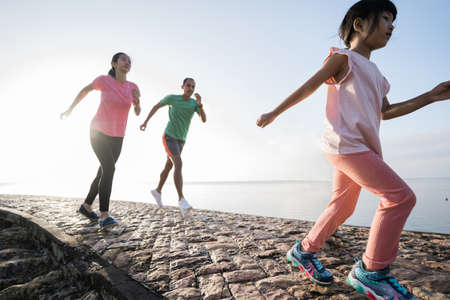Understanding Chronic Pain in Older Adults
Chronic pain is a common issue that affects many older Americans, often interfering with daily life and overall well-being. As people age, they are more likely to experience ongoing pain due to various health conditions like arthritis, back problems, or nerve damage. Unlike short-term pain from an injury or illness, chronic pain can last for months or even years.
Overview of Chronic Pain
Chronic pain is defined as pain that lasts longer than three to six months. It can range from mild discomfort to severe pain that limits movement and independence. For many seniors, this persistent pain becomes a part of their everyday lives, affecting both physical and emotional health.
Prevalence Among Older Americans
Chronic pain is especially widespread among older adults in the United States. Studies estimate that nearly half of adults over the age of 65 live with some form of chronic pain. The table below shows common causes and how frequently they affect seniors:
| Cause of Chronic Pain | Estimated Prevalence Among Seniors |
|---|---|
| Arthritis | ~50% |
| Back Pain | ~30% |
| Nerve Pain (Neuropathy) | ~20% |
| Osteoporosis-Related Pain | ~10% |
| Cancer-Related Pain | ~5% |
Unique Challenges Faced by Seniors
Seniors dealing with chronic pain face unique challenges that can make managing their symptoms more difficult. Some of these include:
- Physical Limitations: Reduced mobility and muscle strength can make it harder to stay active.
- Multiple Health Conditions: Many older adults have other health problems that may complicate pain management.
- Sensitivity to Medications: Seniors may be more sensitive to side effects from pain medications, making non-drug treatments important.
- Mental Health Impact: Persistent pain can lead to feelings of depression or isolation, especially if it limits social activities.
The Importance of Addressing Chronic Pain in Seniors
Treating chronic pain in older adults is essential for maintaining their independence, mobility, and quality of life. Understanding the nature of chronic pain and the specific hurdles seniors face is the first step toward finding effective relief strategies, such as exercise and physical activity, which will be explored in later sections.
2. Benefits of Exercise and Physical Activity
Reducing Pain Through Movement
For older adults dealing with chronic pain, regular exercise might sound intimidating at first. However, gentle and consistent movement can actually help reduce pain over time. Activities like walking, stretching, or water aerobics encourage the body to release endorphins—natural chemicals that help block pain signals and improve mood.
Improving Mobility and Flexibility
Staying active helps keep joints flexible and muscles strong. This is especially important for those with arthritis, back pain, or other long-term conditions. By incorporating movement into daily routines, older adults can maintain or even improve their range of motion, making it easier to perform everyday tasks like getting out of a chair or climbing stairs.
Key Benefits at a Glance
| Benefit | How It Helps | Examples of Activities |
|---|---|---|
| Pain Relief | Releases endorphins and reduces inflammation | Walking, swimming, gentle yoga |
| Better Mobility | Keeps joints flexible and muscles active | Stretching, tai chi, cycling |
| Improved Balance | Lowers risk of falls and increases confidence | Balance exercises, dancing, strength training |
| Enhanced Mood | Reduces anxiety and depression symptoms | Group fitness classes, gardening, outdoor walks |
| Social Engagement | Encourages connection with others and reduces isolation | Community center activities, walking groups, team sports (pickleball) |
Enhancing Quality of Life
The positive effects of regular physical activity go beyond just physical health. Staying active can boost self-esteem and independence in older adults. Whether joining a local SilverSneakers class or simply taking daily walks around the neighborhood park, these activities foster a sense of accomplishment and joy. As mobility improves and pain decreases, many find they’re able to participate more fully in family events and community gatherings.

3. Types of Exercise Suitable for Older Adults
Low-Impact Aerobics
Low-impact aerobic activities are a great choice for older adults dealing with chronic pain. These exercises, such as walking, cycling on a stationary bike, or using an elliptical machine, help improve heart health and boost overall energy without putting too much stress on joints. Many community centers and local gyms in the U.S. offer group classes designed specifically for seniors, making it easier to stay motivated and socially connected.
Strength Training
Maintaining muscle strength is important as we age, especially when managing chronic pain. Strength training doesnt mean lifting heavy weights at the gym; it can include simple resistance bands, light dumbbells, or even bodyweight movements like chair squats or wall push-ups. These exercises help support joints, improve balance, and reduce the risk of falls.
Sample Strength Training Exercises
| Exercise | Equipment Needed | Benefits |
|---|---|---|
| Chair Squats | Sturdy Chair | Strengthens legs and improves stability |
| Bicep Curls | Light Dumbbells or Water Bottles | Tones arms and increases grip strength |
| Wall Push-Ups | Wall | Builds upper body strength safely |
| Seated Leg Lifts | Chair | Enhances lower body mobility and core strength |
Stretching and Flexibility Exercises
Gentle stretching helps maintain flexibility, reduce stiffness, and promote better range of motion. Activities like yoga or simple stretching routines can be easily adapted for older adults by using props like chairs or yoga blocks. Stretching regularly may also help ease certain types of chronic pain by keeping muscles and joints limber.
Popular Stretching Activities for Seniors
- Chair Yoga: Gentle poses performed while seated or holding onto a chair for support.
- Mild Tai Chi: Slow, flowing movements that enhance balance and relaxation.
- Morning Stretches: A basic routine done after waking up to loosen muscles and joints.
Aquatic Exercises
Aquatic exercises are especially popular among older adults in the United States because water reduces pressure on joints while allowing the body to move freely. Swimming laps, water aerobics classes, or simply walking in shallow water can help manage pain and improve strength without high impact. Many public pools offer special senior hours or aquatic therapy sessions tailored for those with chronic conditions.
The Benefits of Different Exercises for Chronic Pain Relief in Older Adults
| Type of Exercise | Main Benefit | Best For |
|---|---|---|
| Low-Impact Aerobics | Boosts heart health and stamina | Knee/hip arthritis, mild joint pain |
| Strength Training | Builds muscle support around joints | Back pain, osteoporosis prevention |
| Stretching & Flexibility | Reduces stiffness and maintains mobility | Pain related to tight muscles or limited movement |
| Aquatic Exercises | Cushions joints during movement; full-body workout | Sensitive joints, severe arthritis, fibromyalgia |
Selecting the right type of exercise depends on individual needs, medical advice, and personal preferences. Most importantly, staying active—even with gentle movements—can make a big difference in managing chronic pain and improving quality of life for older adults.
4. Safe Exercise Guidelines and Tips
Why Safety Matters for Older Adults with Chronic Pain
Staying active is a great way to help manage chronic pain, but it’s important to exercise safely, especially for older adults. The right approach can prevent injuries and make physical activity more enjoyable and effective.
Consult a Healthcare Professional First
Before starting any new exercise routine, it’s a good idea to talk with your doctor or physical therapist. They can help you choose activities that are safe based on your health history, current medications, and pain levels. According to the Centers for Disease Control and Prevention (CDC) and the American Physical Therapy Association (APTA), getting professional advice is key for personalizing your plan and preventing complications.
Start Slow and Listen to Your Body
When beginning an exercise program, remember to:
- Start with low-impact activities like walking, stretching, or gentle yoga
- Increase the intensity and duration gradually
- Pace yourself—rest if you feel tired or sore
- Avoid movements that cause sharp or sudden pain
Recommended Activities by U.S. Health Organizations
| Activity Type | Description | Recommended Frequency |
|---|---|---|
| Aerobic Exercise | Walking, swimming, cycling | At least 150 minutes per week (as tolerated) |
| Strength Training | Resistance bands, light weights, bodyweight exercises | 2 days per week |
| Flexibility & Balance | Stretching, Tai Chi, balance drills | 2-3 days per week |
Tips from the CDC and APTA for Safe Exercise at Home or in the Community
- Wear comfortable shoes and clothing: Supportive footwear can prevent falls.
- Create a safe environment: Remove tripping hazards at home.
- Stay hydrated: Drink water before, during, and after activity.
- Warm up and cool down: Gentle stretching helps prevent injuries.
- If you feel dizzy or very short of breath, stop right away and contact your healthcare provider.
- If joining group classes: Let the instructor know about your pain condition so they can offer modifications.
If You Experience Pain During Exercise…
Mild soreness is normal when starting something new, but if you feel strong or increasing pain during activity, stop right away. Let your healthcare provider know about any unusual discomfort.
5. Integrating Physical Activity Into Daily Life
Practical Strategies for Older Adults
For many older adults living with chronic pain, exercise and physical activity can seem intimidating or even out of reach. However, integrating movement into everyday life is both possible and rewarding. Here are some simple strategies tailored for the American lifestyle:
- Start Small: Begin with short walks around the neighborhood or gentle stretching during TV commercials.
- Make It Social: Invite friends or family to join you. Many local community centers offer group classes designed for older adults.
- Use What’s Available: Take advantage of local parks, mall walking clubs, or even gardening as forms of physical activity.
- Set Realistic Goals: Use a calendar or smartphone app to track your progress and celebrate milestones, no matter how small.
- Modify Activities: If mobility is an issue, chair exercises or water aerobics are excellent alternatives.
Finding Community Resources
The United States has many resources to help older adults stay active. Here’s a table summarizing some common options:
| Resource | Description | How to Access |
|---|---|---|
| Local YMCA/YWCA | Offers senior fitness classes and swimming sessions | Visit your nearest branch or check their website |
| Parks & Recreation Centers | Hosts walking groups, tai chi, yoga, and more | Contact your city’s Parks Department or look online |
| Mall Walking Clubs | Safe, climate-controlled walking environments | Inquire at local malls or search “mall walking” in your area |
| AARP Programs | Virtual and in-person fitness events for members | Visit AARP.org/healthy-living/fitness |
| Seniors Centers | Diverse exercise programs tailored for older adults | Find centers through your county’s aging services office |
| SilverSneakers® Program | Free fitness memberships through Medicare plans | Check eligibility at silversneakers.com |
Tackling Barriers to Exercise
Certain challenges might make it hard to start a new routine. Here are some American-specific tips to overcome common obstacles:
- Lack of Motivation: Find an exercise buddy or join a virtual class for accountability.
- Pain Flare-Ups: Listen to your body and adjust intensity; consult a healthcare provider if unsure.
- No Transportation: Explore home-based workouts via YouTube or DVDs tailored for seniors.
- Lack of Equipment: Household items like soup cans can be used as light weights; use a sturdy chair for balance exercises.
- Cultural Diversity: Seek out culturally relevant activities—such as dance classes reflecting your background—often available in larger cities.
Building Long-Term Habits in Everyday American Life
The key is making movement a regular part of your day. Try parking farther from store entrances, taking stairs instead of elevators when possible, or setting reminders to stand up every hour. Many Americans find that connecting physical activity with daily routines—like walking after meals or joining church-based wellness groups—helps them stay consistent without feeling overwhelmed.
Your Next Step Forward
You don’t need fancy equipment or expensive memberships to get moving. With these practical ideas and by tapping into local resources, older adults across America can enjoy the pain-relieving benefits of regular physical activity while building a healthier, more active lifestyle at any age.


